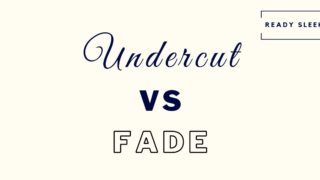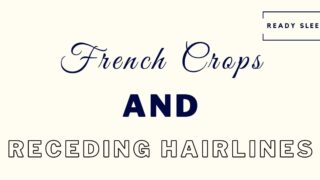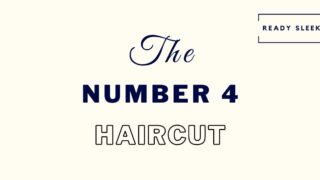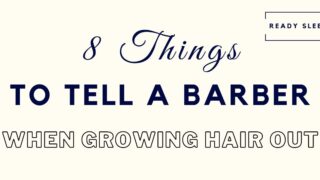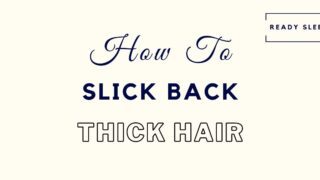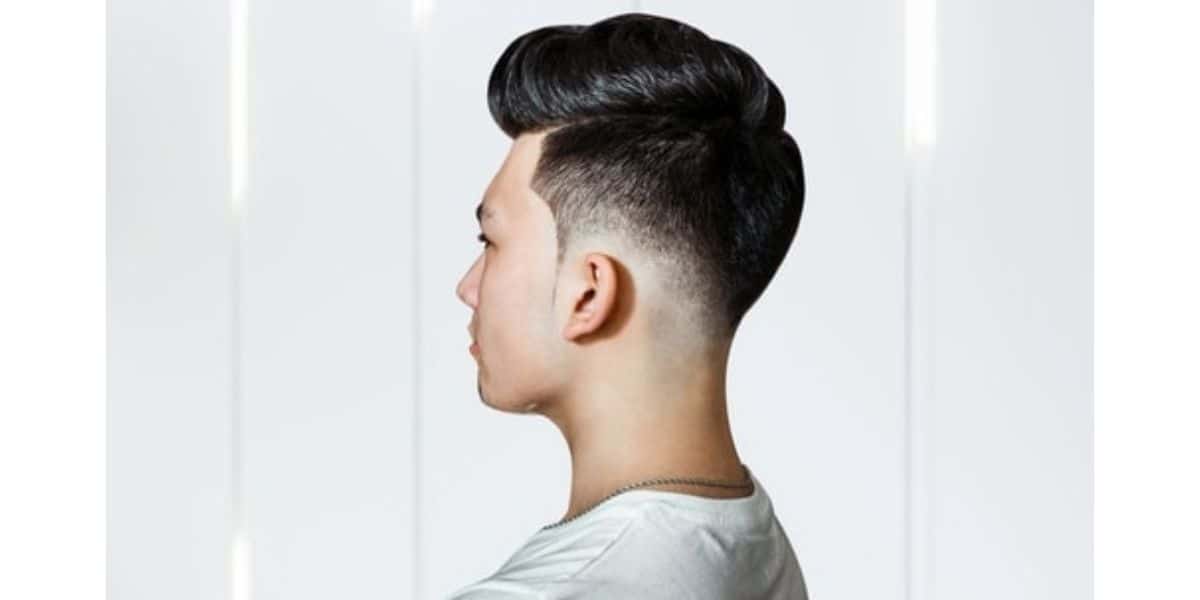The temple fade is a popular feature that can be included in many different hairstyles.
It’s important to know exactly what it is, what it looks like, and how it’s different from other types of fades before you ask your barber for one.
The worst scenario would be asking for a temple fade when you had a different look in mind altogether.
After reading this, that’ll never be an issue.
What Is A Temple Fade
The temple fade is a specific type of fade where there is a gradual increase in length at the sides and back starting at the level of the temples.
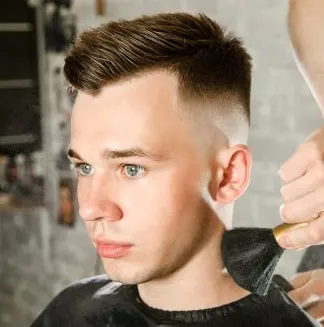
The blurred and blended effect that arises from the gradual shift in length is what gives any “fade” its characteristic look.
A temple fade is simply one where the shortest length of the sides and back starts to transition into longer lengths at the temples.
Everything beneath the temples is an even and equal short length.
It’s a striking feature that can be incorporated into so many different styles ranging from short to long.
For example, temple fades can be included in buzz cuts, pompadours, faux hawks, etc.
All that matters is that the fade starts at the temples. The transition from the sides to the top is gradual and not sudden like it would be with an undercut or high and tight, for instance.
Temple Fade Vs Taper Fade
With a taper fade, the transition in length starts low down, usually just above the sideburns. In contrast, temple fades transition in length much higher up at the level of the temples.

The taper fade in this picture is high enough to reasonably be called a low fade – but the appearances are so similar that it’s not worth making the distinction.
A taper fade is a much more subtle type of fade than a temple fade.
This is because the faded effect occurring from the shift in length starts much lower down with a taper fade.
As a result, the appearance of the fade is a lot less noticeable with a taper fade.
Compare this with a temple fade where the majority of the sides and back are at its shortest length before it finally starts to transition into longer lengths at the level of the temples.
How To Choose
When choosing between a temple fade and a taper fade, consider the following points.
1. Face Shape
Temple fades are well suited to men with rounder faces who want to remove volume from the sides and make their faces look narrower.
Taper fades do this as well, but to a lesser extent than the temple fades where a lot of hair is removed from the sides.
2. Subtlety
If you’re looking for an eye-catching, attention-grabbing style of fade, look no further than the temple fade.
Because it starts so high up, the temple fade is often the feature of the hairstyle that draws notice first.
This effect is made even more prominent when the hair on top is styled into something tall or high-volume like a pompadour. This is because there’s even more contrast between the short hair at the sides and the long hair on top.
The shorter the hair at the sides (i.e the shortest length of the fade), the more prominent this effect will be further yet.
For example, a temple skin fade is where the shortest length is shaved down to the level of the skin.
This will be more obvious than a number 1 fade or a number 2 fade, for instance.
If you’d prefer a more subtle fading of the sides, a taper fade will be more appropriate. It’s so subtle that it’s sometimes not even immediately obvious that there is one.
It’s a fade that’s even lower than a low fade.
If you’re looking for an understated tapering, the taper fade would definitely be more appropriate than a temple fade.
Temple Fade Vs Low Fade
A low fade is where there is a gradual transition in length at the sides that starts around an inch above the ear. In contrast, with temple fades this transition in length starts higher up at the temples.
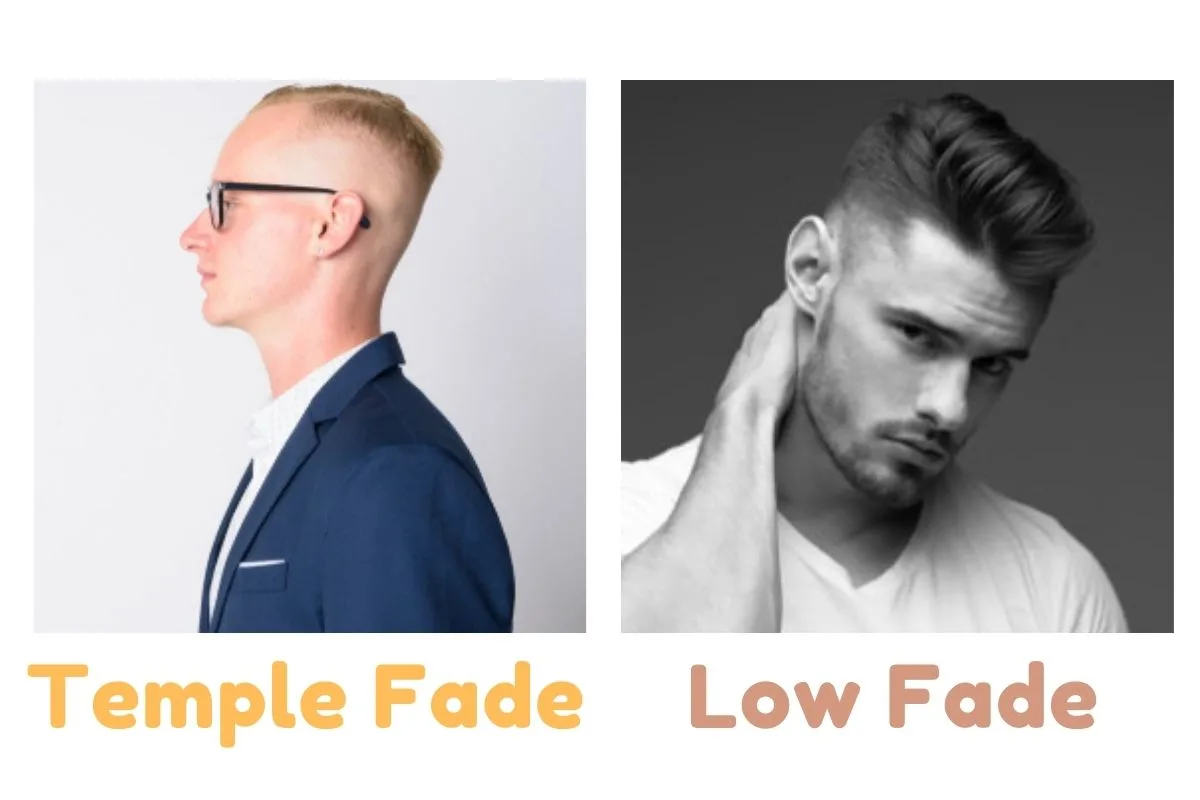
With both fades, there are no harsh lines. You get that glorious blurred, blended, faded, effect with both of them.
The only difference is that temple fades transition in length higher up than low fades.
Low fades are a step higher up than taper fades.
Although the definition can vary, using an inch above the ear as a landmark is a pretty good rule of thumb.
Both temple fades and low fades can be included in any hairstyle.
In addition, they can both be as short or as long as you want them to be. The shortest length of both temple fades and low fades could be as short as shaved skin (i.e skin fade).
Or, they could have their shortest length a little longer (i.e #1 or #2 length) before transitioning into longer lengths as you go up.
How To Choose
Here are the points to consider when choosing between a temple fade and a low fade.
1. Versatility
While both temple fades and low fades can technically be included in any hairstyle, you’ll find that a low fade is just a little more versatile than a temple fade.
Having the fade lower down the sides and back does make your range of possible hairstyles broader.
For example, you may find that a pompadour with a temple fade just looks too obvious and attention-grabbing for your liking. Some men may love it, but for others – it’s hit and miss.
A low fade, on the other hand, is subtle enough to increase the chances that you’ll like what you end up with no matter what style you’ve got on top.
Put simply – the low fade is a safe bet. A temple fade, on the other hand, is more of a risk.
This is especially important if you’re going for your first fade. Consider going for a low fade first. If you’re a fan and you think you could go higher, consider the temple fade for your next one.
2. Maintenance
A temple fade will be higher maintenance than a low fade.
You’ll find yourself needing to go for “top-ups” more frequently with temple fades than you would with a low fade.
Not a lot more – but noticeably more.
More barber visits equal more money.
The shorter the fade, the more frequently you’ll need another visit if you want to keep it looking crisp.
Temple Fade Vs Drop Fade
A drop fade is where the fade lowers, or “drops”, as it passes behind the ear. This results in a U-shape at the back. In contrast, a temple fade starts at the temples and doesn’t drop lower as you go around the head.
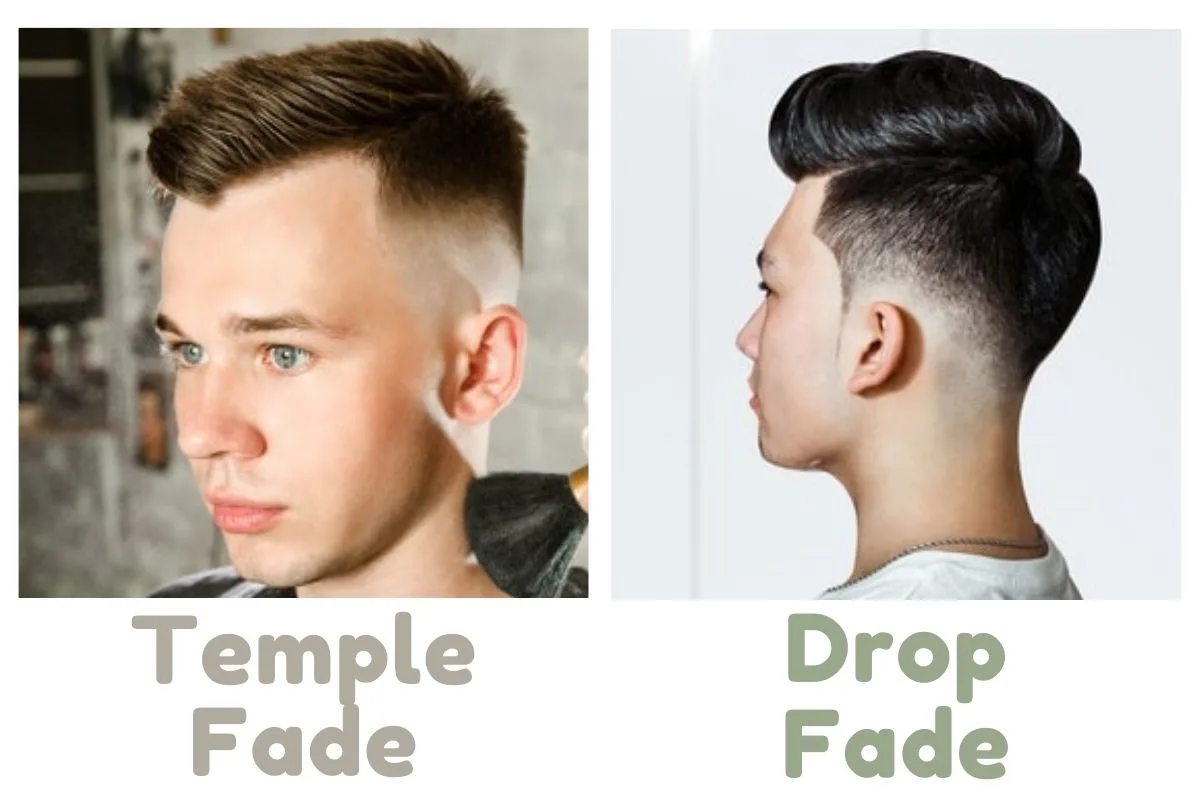
A temple fade, just like other fades other than a drop fade, is more of a horizontal and straight line as you go around the back.
It doesn’t drop lower – there isn’t a U-shape at the back with a temple fade.
Drop fades are popular because of the natural appearance it produces. Funnily enough, the lowering of the fade as you approach the back actually tends to follow the natural curvature of the head.
The “drop” refers to the shape of the fade, while the term “temple” refers to how high the fade starts.
It’s important to note that drop fades usually start at a “low” or “mid” level. In other words, you wouldn’t expect to see a drop fade any higher than 1-2 inches above the ear.
Drop fades generally look unusual when they start at the level of the temples. The lowering of the fade at the back just doesn’t look natural when it’s this high.
That’s yet another difference between a drop fade and a temple fade – you wouldn’t see a drop fade as high up as the temples.
How To Choose
Consider the following points when choosing between a temple fade and a drop fade.
1. Natural Curvature
As I mentioned above, drop fades appear to follow a natural and aesthetically pleasing U-shaped curve as you go around the back.
This may sound strange, but when you see it, it just seems to make sense.
The back of the head has many ridges and grooves. It isn’t a neat and tidy shape. Having a straight and horizontal line go around the back as you would with a temple fade usually doesn’t result in a very natural appearance.
This is fine – a lot of men actually find this appealing.
But if you’d prefer a more subtle and natural appearance to the curve of the fade as you go around the back, a drop fade may be the way to go.
2. Uniqueness
Drop fades are generally less common than temple fades.
With fades as popular as they are these days, it’s important to try and set yourself apart, even if it’s in very subtle ways.
The curvature of the fade is one way to do it.
Temple fades may be eye-catching and attention-grabbing, but when every other guy you see has one, it’s hard to stand out.
Consider the drop fade if you want a subtle way to set yourself apart from the crowd.
Temple Fade Vs Blowout
A blowout is a hairstyle where the sides and back are faded short and the hair on top is high volume and swept upward. In contrast, a temple fade is where there is a gradual transition in length at the sides starting at the temples.
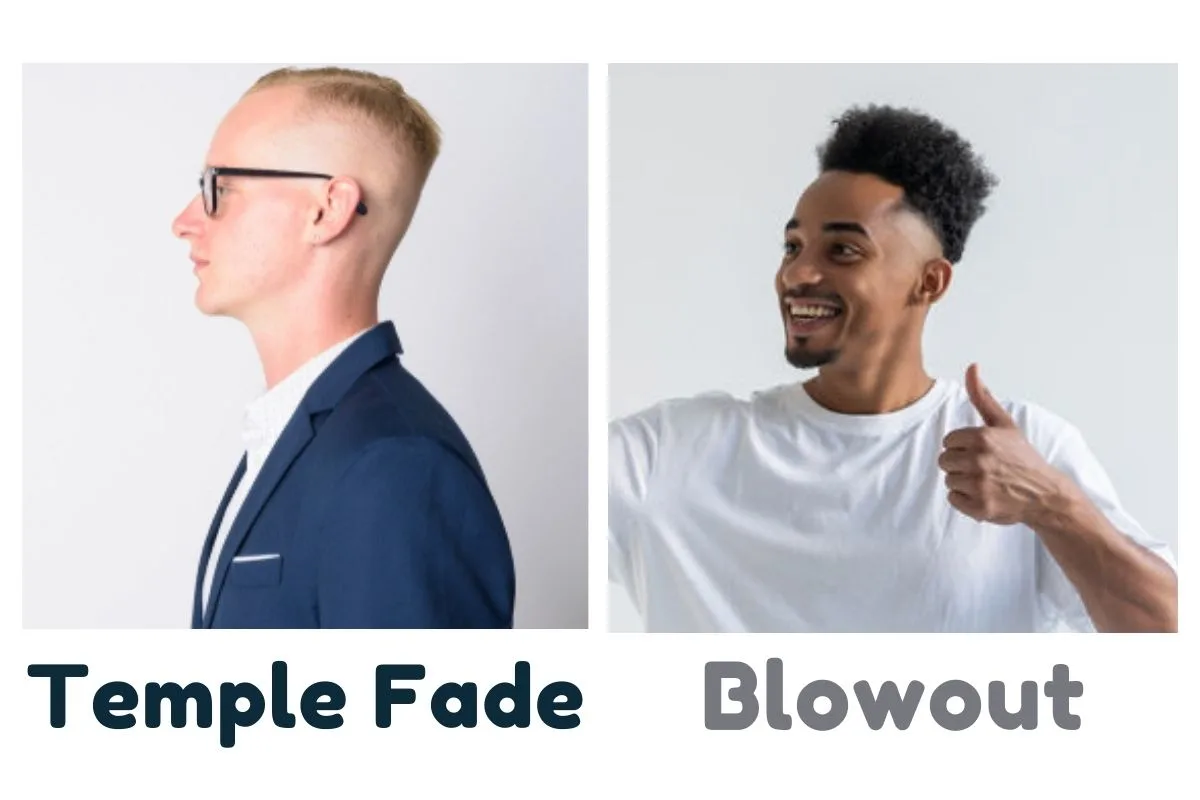
Remember -a blowout is a style and a temple fade is a feature.
A blowout follows a specific formula – faded/tapered sides and back before bursting out into a high volume, “blown out” style on top.
A temple fade is a feature and not a style in itself. It can be included in many different hairstyles. All it means is that there’s a faded effect starting at the level of the temples – it’s the result of a gradual increase in length at this point with no harsh lines.
The blurred, blended effect that arises at this level is what’s known as the temple fade.
You can do whatever you want to with the hair on top.
At the risk of confusing things, a blowout can in fact include a temple fade. Here, the fade starts at the level of the temples and the hair on top does burst outward into a big and high-volume style.
Just like any other blowout – but with the sides faded at the level of the temples.
But blowouts can just as easily have fades that start lower down – at a “mid” or “low” level. However, it’s more common to see blowouts with fades that are “mid” or “temple” level as it makes the effect more prominent.
This is because you’ll have more contrast between the short hair at the sides and the high-volume hair on top.
Ultimately, the key difference between temple fades and blowouts to remember is that a blowout is a very specific style.
You should know what to expect when you ask for a blowout and not much more information is needed by the barber other than how high you want the fade at the sides.
With temple fades, on the other hand, you’ll need to specify what you want to do with the hair on top, as well as how short you want the faded sides to go.
How To Choose
If you’re trying to choose between a temple fade and a blowout, use the following points to guide your decision.
1. Face Shape
Blowouts are great for adding vertical height and length to a face. Men with rounder and shorter face shapes would benefit from this.
On the other hand, men with longer face shapes (eg. oblong) may find that this makes it look even longer.
They’d be better off choosing a style that adds less height.
A temple fade would be fine for any face shape – it’s more important what is done with the hair on top. Men with longer face shapes would be better suited to styles with less height on top – for example, a buzz cut or crew cut.
They can easily combine these styles with a temple fade if they do want heavily tapered sides and back.
2. Versatility
As I mentioned, the blowout is a specific and high-volume style.
It isn’t exactly for everyone and definitely isn’t as popular as it used to be.
However, having the hair this long on top does give you some options. You don’t necessarily need to keep it in a typical blowout shape all the time.
If you ever get tired of the style, you could always simply slick it back instead. Or, you could comb it to the side.
My point here is that asking for a blowout does give you more options than you might initially think.
While you may choose to blow-dry it up and outward most of the time, if you ever want a change you’ve got the option of doing so because the hair on top is long enough to allow it.
Temple Fade Vs High Fade: Is There A Difference?
There is no difference between a temple fade and a high fade. They both refer to features where the hair at the sides and back gradually transitions into longer lengths at the level of the temples.
It’s a common misconception that these two types of fades are different.
The differences, if present, are so minimal that they’re not even worth considering.
The term “high fade” is a little more commonly used than “temple fade” – you’d probably be better off saying “high fade” to be safe.
But it’s important to realize that whichever one you ask for, you should expect the same result.
Conclusion
There you have it – temple fades compared to several other similar styles they’re frequently confused for.
Hopefully, you now know exactly what to expect next time you ask your barber for one of these.
Enjoy.
Ready Sleek founder. Obsessed with casual style and the minimalist approach to building a highly functional wardrobe. Also a fan of classic, vintage hairstyles.

![Temple Fade Vs Taper, Low Fade, Drop Fade, Blowout [Pics]](https://www.readysleek.com/wp-content/uploads/2021/06/temple-fade-vs-taper-vs-low-fade-vs-drop-fade-vs-blowout-feature-image-720x405.jpeg)
